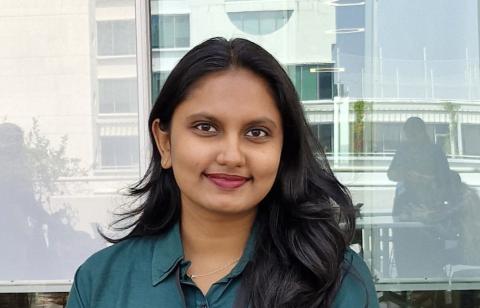2024-25 Maitri Scholars

Building resilient, low-energy water infrastructure, this project advances sustainable water solutions for underserved coastal communities, including solar-powered desalination, gravity-fed systems, and renewable-powered distribution. Leveraging clean technology, this project develops scalable models to address water access challenges, empowering communities and setting a standard for climate-resilient infrastructure in the IndoPacific.

This project aims to address fundamental problems in designing algorithms for distributed quantum computing programs, including error correction, control, compilation and security. The project will also focus on applied research on distributed quantum machine learning, and develop software systems for large scale application of distributed quantum computing.

This research proposes a novel design and control for charging batteries of electric vehicles. The project facilitates electric vehicles to consume the energy generated by clean, renewable sources instantly, leading to their significant uptake.

Conventionally, lupin is fractionated into protein and dietary fibre food ingredients using wet processing, which produces a large amount of wastewater. This project aims to solve this issue by developing an innovative, cost-effective, waste-free dry fractionation process that should valorise lupins into high-value ingredients to manufacture healthy food products.

This project aims to study solid-state nanopore sensors combined with machine learning to develop a diagnostic tool for blood-based biomarkers of neurodegenerative diseases, in particular Alzheimer’s Disease.

This research aims to develop a sustainable biofertilizer by integrating nano-biochar with plant growth-promoting bacteria to enhance soil health, improve crop productivity, and reduce reliance on chemical fertilizers while contributing to carbon sequestration.

This project develops a low-cost, sustainable method for hydrogen production from wastewater through photo-electrochemical water splitting. It utilises wastewater's inherent contaminants as additional charge carriers to enhance efficiency while simultaneously treating the wastewater. It aims to develop clean energy solutions, minimising environmental impacts, and supporting circular economy.

This project aims to develop advanced machine learning methods for generating digital twins of buildings, enabling energy efficiency analysis and informing the design of energy-efficient retrofits at scale. By developing tools for quantifying and improving building energy efficiency, this project will contribute to Australia's ambition to achieve net-zero by 2050.

This project develops a comprehensive technoeconomic framework, incorporating economic feasibility assessments and policy recommendations, to guide the transition of heavy industries in India and Australia toward net-zero emissions. By examining hydrogen energy, carbon management, circular economy strategies, and international trade, the project aims to decarbonise manufacturing hubs in both regions.

This project looks into stable metal-organic frameworks (MOFs) prepared for applications in scalable Direct Air Capture technologies. These MOFs will be examined under varying electric and magnetic fields, and light irradiation, to improve their CO2 capture and release properties. The feasibility for applying these materials to the net zero transition will be examined.

This project focuses on developing advanced photoelectrodes to enhance stability and efficiency in photoelectrochemical water splitting. This project aims to create a commercially viable solar-to-hydrogen system, using environmentally stable materials and seawater as a sustainable hydrogen source.

Rising construction demand drives advanced manufacturing, yet significant carbon emissions in India and Australia remain a concern. This project develops sustainable cementitious material using additive manufacturing, replacing energy-intensive components with carbon waste. It emphasises enhancing material properties assisted by nanoscale morphological changes through selective lab-scale processing while ensuring commercialisation feasibility.
